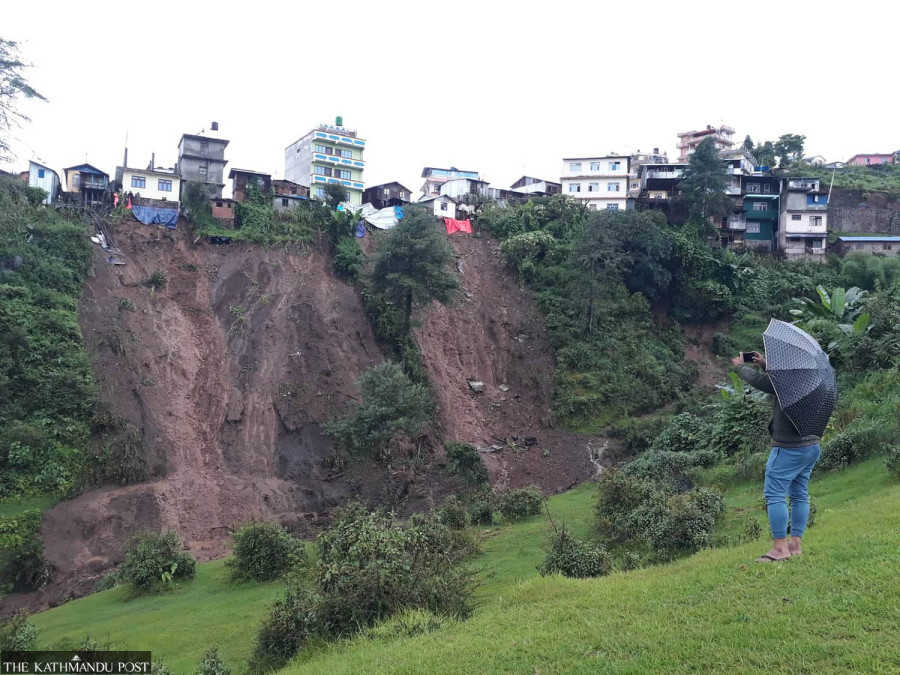Climate & Environment
104 killed in landslides, floods and lightning this monsoon
At least 29 people are reported missing and 6,083 families have been affected by disaster-related incidents.
Post Report
At least 61 people have died in landslides and floods since the start of the monsoon this year, according to data from the National Disaster Risk Reduction and Management Authority.
An additional 43 people succumbed to lightning strikes.
Several districts across the country, including Sankhuwasabha, Panchthar, Bhojpur and Taplejung of Koshi Province, and Mustang of Gandaki Province among others witnessed deaths and destruction caused by landslides and floods in the monsoon.
Widespread damage to roads, bridges, public properties, and hydel projects (both in operation and under construction) has been reported from those districts.
Twenty-nine people are missing and 274 were injured in the incidents of floods, landslides and thunderbolts in various districts, according to reports. Of the deceased, 71 were male and 33 female.
Altogether, 6,083 families have been affected by landslides, floods and thunderbolt-related incidents.
In 2022, 118 people died in 19 flood-related incidents and 99 landslide-related incidents. Additionally, 87 died in lightning strikes in various districts.
Officials at the National Disaster Risk Reduction and Management Authority said they have imparted disaster response training to around 12,000 personnel from three security agencies—Army, Armed Police Force and Nepal Police. Apart from this, more than 100,000 people have received volunteer training.
Floods and landslides cause huge losses to life and property every year, but the country is poorly prepared to deal with disasters.
Climate scientists say incidents of floods, landslides, and inundations could increase in the coming days.
Erratic weather events—heavy rainfall in a short span of time in some places, lack of rainfall for months and even during mid-monsoon in other places, continued rain for several days and other unusual weather events—have become frequent in Nepal, according to Dr Indira Kandel, a senior divisional meteorologist at the Climate Analysis Section under the Department of Hydrology and Meteorology.




 18.12°C Kathmandu
18.12°C Kathmandu










